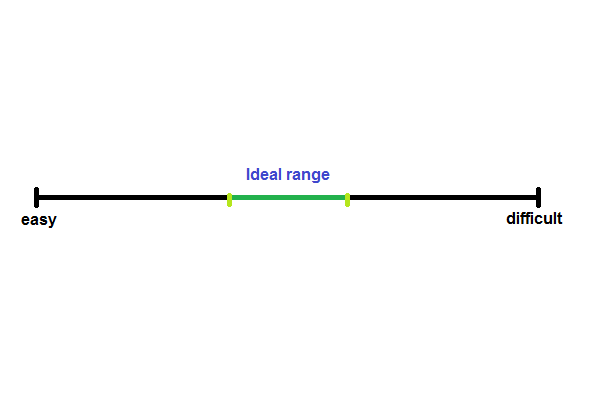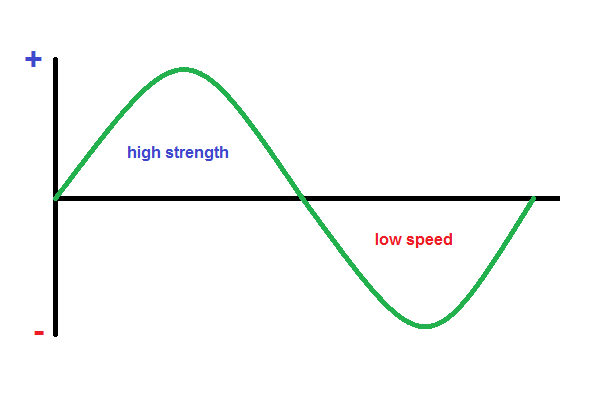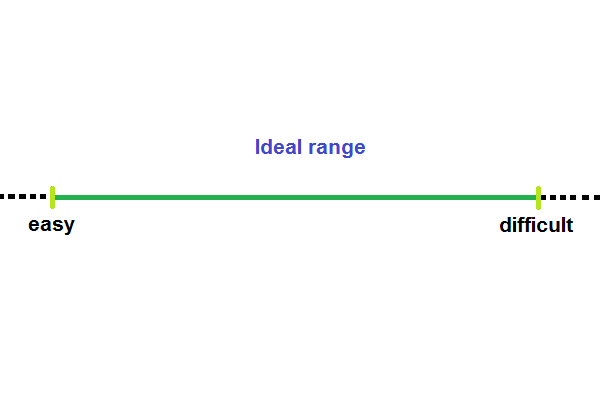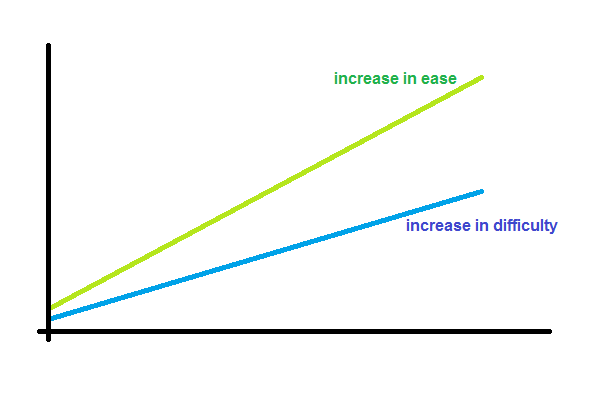
The video game is a form of entertainment media like no other; in that it delegates the responsibility of control and progression of the plot to you, the gamer. Think of it as a puzzle; through exhibiting control over a medium, you find logical solutions to problems which are set in your path. If there’s an obstacle in front of you, you jump over it. If you’re confronted with an enemy, you devise a plan of attack. These are practices (with seemingly obvious expressions of cause and effect) which have become part of our second nature as gamers, but logic and problem solving is a pivotal mechanic to gaming which must not be overlooked. The notion of control is what games should strive to deliver. So, how does the prospect of challenge play a part in gaming?
The Ideal Range
When a game is too easy, there is no sense of fulfilment in completing the challenges it wafts your way. Conversely, when a game is too difficult, it becomes infuriating and frustrating to play, such that the enjoyment gained from completing its challenges is outweighed by the effort put in to do so. Between these points on the ‘difficulty scale’ is a range (the ideal range), in which a good balance of effort and reward exists [as shown in diagram below]. Where, is this range, a game’s difficulty is placed should depend upon its role in the market and its appeal. Is it an arcade-style game with a low learning curve, or is it a more hardcore game, requiring time and focus? Most developers try to answer this question by covering as large a part of this range as possible – that is, by giving you difficulty settings to choose for yourself. There is no right answer, as long as the developer stays true to its game’s purpose and appeal.

Fairness and Control
As stated above, a logical system of cause and effect should exist. It is absolutely imperative that games punish mistakes or errors of judgement. Under no circumstances should a game be unforgiving in situations in which the gamer has little levels of control over proceedings. The game should only punish when the player makes a misjudgement or a mistake (such as attacking too early or being careless in movement) – the key being that these are avoidable errors! Another aspect of fairness is balance. Good games find a neutral state in which deviations are offset by opposite ones (a yin-yang concept). Dark Souls, for example, is a game famous to do this very well. If an enemy is abnormally strong (think of this high-strength as a positive deviation to the neutral state), then this enemy will probable suffer from a lack of speed (think of this as a negative deviation to offset the positive, and thus restore neutral balance) [as shown in graph below]. In keeping with the fundamental factor of gaming, cause and effect, the punishments dealt by a game’s difficulty must be of appropriate consequence to misused control.

Punishment
Within the ideal range of difficulty, the developer has a choice about where to place the game. Will the game in question punish severely for mistakes; or will it be lenient? Or maybe it will be scalar (the severity of punishment being dependent upon the severity of the mistake – which would be near the centre of the ideal range). In the case of Namco Bandai’s Dark Souls, they placed their game toward the difficult end of the range [as shown in the diagram below]. This asks more of the gamer, and is therefore likely narrow the target market quite drastically (by deterring most mainstream gamers), but is the method which is probable to win critics over. Again, there is no binary ‘right and wrong’ – it’s all about context.

Variability
As a game progresses, there are a number of factors which make the game easier to play. Firstly, the gamer is honing the skills required to excel at the game (known as the learning curve). Secondly, it is likely that the character (in many RPGs) or team (in many sports games) is developing and increasing its own skills and attributes, making it more effective at its objective. Finally, unlocks and rewards occur in a progressive manner, meaning that the more you play, the more you unlock.
Good games take account of the inherent decrease in difficulty and adjust the mechanics of the game accordingly. However, do not be fooled as to think that games, by doing this, eradicate (or cancel out) the dropping difficulty. Many games will upwards-adjust the difficulty at a much lower rate than that of the increase in gaming ease due to progression [as shown in the graph below]. This is to preserve the accomplishment behind progressing through the game – or else you’d be thinking “I’m half-way through this game now, and have unlocked so many good weapons and items! Why aren’t my skills making this game any easier?!”

There you have it! When it comes to gaming difficulty, it is crucial to remember that the game must stay true to the logical nature of cause and effect (and inherently, control and consequence), and that the game’s mechanic for expressing difficulty (punishment) must always be fair, justified and avoidable.

